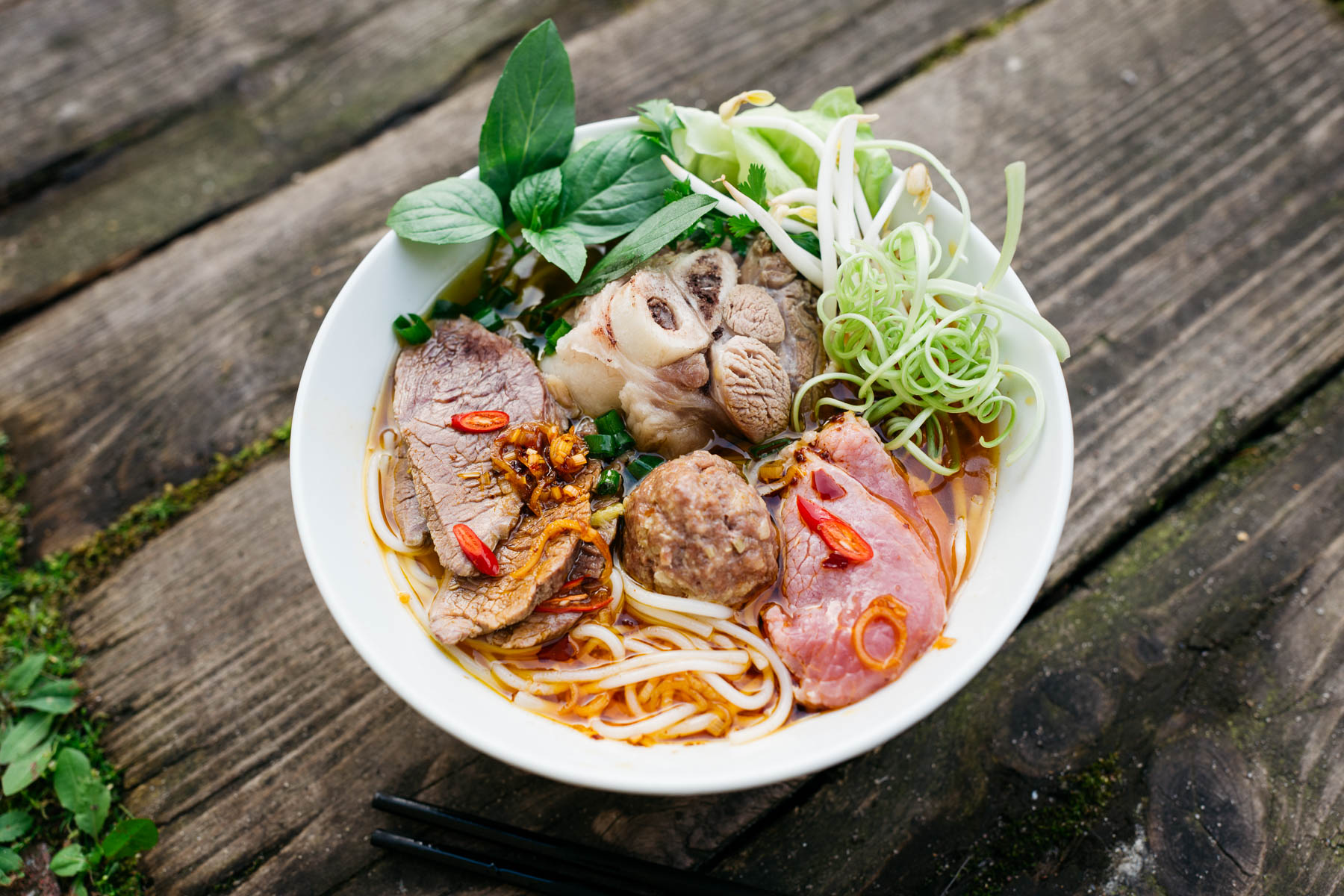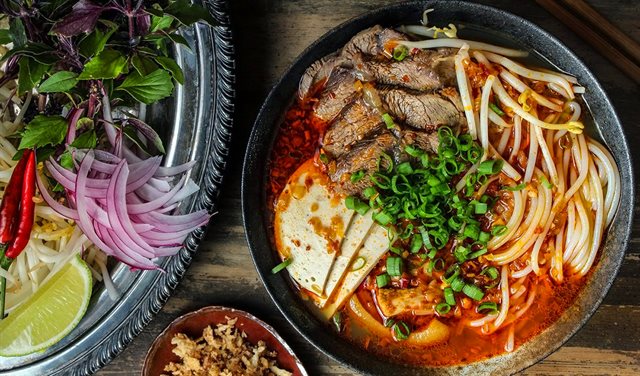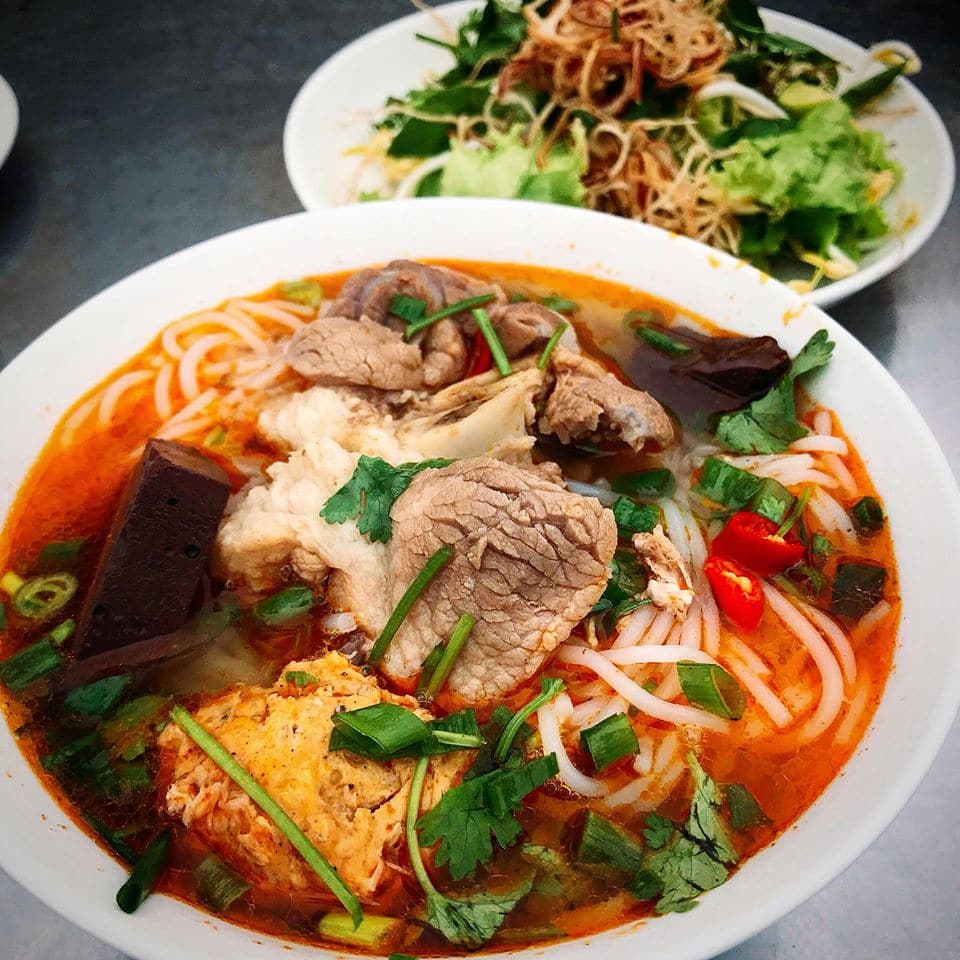If you’re a fan of Vietnamese cuisine, you have probably heard of pho, the famous noodle soup dish. But have you tried Bun Bo Hue? This lesser-known yet equally delicious noodle soup is a must-try for any food lover. Originating from the city of Hue in central Vietnam, bun bo hue is a popular street food that has gained recognition worldwide for its bold and spicy flavors. In this article, we’ll dive into the history, ingredients, and preparation of bun bo hue, as well as some of its variations and FAQs.
Table of Contents
History of Bun Bo Hue
Bun bo hue, also known as Hue-style beef noodle soup, originates from the former capital city of Vietnam, Hue. The city was once home to the Nguyen Dynasty, and it is said that bun bo hue was a favorite dish among the royals. However, the dish gained popularity among commoners during the 19th century when refugees from the northern regions of Vietnam brought their own version of beef noodle soup to Hue. Over time, the two dishes combined, resulting in what we know today as bun bo hue.
Ingredients and Preparation
Bun bo hue may seem similar to pho at first glance, but there are some key differences in both the ingredients and preparation. While pho uses flat rice noodles, bun bo hue uses round rice vermicelli noodles. Additionally, unlike pho which has a clear broth, bun bo hue has a rich, slightly spicy broth that is made with beef bones, lemongrass, annatto seeds, and shrimp paste. The broth is then simmered for hours to extract all the flavors.

Ingredients:
- Beef bones
- Lemongrass
- Annatto seeds
- Shrimp paste
- Round rice vermicelli noodles
- Beef shank or pork knuckle
- Beef brisket or beef tendon
- Vietnamese ham (cha lua) or pork blood cubes
- Vegetables: bean sprouts, shredded cabbage, sliced onions, lime wedges
To prepare bun bo hue, the broth is first made by simmering beef bones, lemongrass, and annatto seeds for several hours until it’s flavorful. Then, the meat is added to the broth and cooked until tender. The noodles are cooked separately and then added to the broth along with other toppings like Vietnamese ham, vegetables, and a dollop of shrimp paste for extra flavor.

Variations of Bun Bo Hue
Like most popular dishes, bun bo hue has variations that cater to different tastes and preferences. Some variations include using chicken instead of beef, adding pork belly or dried squid to the broth, or using different types of noodles such as egg noodles or glass noodles. In some regions of Vietnam, bun bo hue is also served with a side of rice cakes or crispy fried wonton wrappers.
Types of Noodles:
- Round rice vermicelli noodles
- Egg noodles
- Glass noodles
How to Enjoy Bun Bo Hue
Bun bo hue is typically served in a large bowl filled with noodles, meat, broth, and toppings. To enjoy the dish to its fullest, follow these simple steps:
- Mix everything together – the noodles, meat, and toppings should all be mixed together in the broth for maximum flavor.
- Add lime juice – squeeze a wedge of lime into the soup to add a hint of tanginess.
- Customize your spice level – if you’re a fan of spicy food, add some chili sauce or chili oil to your bowl. If you prefer a milder taste, skip this step.
- Dip your noodles – unlike pho, where the broth is usually sipped through a spoon, bun bo hue is commonly eaten by dipping the noodles into the broth and slurping them up.
- Enjoy the toppings – don’t forget to add in some of the bean sprouts, shredded cabbage, and onions for a crunchy texture and fresh taste.

FAQs about Bun Bo Hue
1. Is bun bo hue gluten-free?
Yes, the traditional version of bun bo hue is gluten-free as it uses rice noodles instead of wheat-based noodles. However, it’s always best to double-check with the restaurant or chef if any other ingredients are added to the dish that may contain gluten.
2. What is the difference between bun bo hue and pho?
The main differences between bun bo hue and pho are the type of noodles used and the broth. Pho uses flat rice noodles and has a clear broth, while bun bo hue uses round rice vermicelli noodles and has a rich, spicy broth.
3. Can I make bun bo hue vegetarian?
While the traditional version of bun bo hue contains meat and shrimp paste, there are vegetarian versions available where the broth is made with vegetable stock and the meat is replaced with tofu or mushrooms.
4. Is it necessary to use annatto seeds in the broth?
Annatto seeds are used to give the broth its signature red color and add a slight nutty flavor. If you cannot find annatto seeds, you can substitute with paprika or omit it altogether.
5. Can I find bun bo hue outside of Vietnam?
Yes, bun bo hue has gained popularity worldwide, and you can now find it in many Vietnamese restaurants around the world. However, the taste may differ slightly depending on the region and the chef’s interpretation of the dish.
In Conclusion
Bun bo hue is a must-try for anyone looking to explore the diverse flavors of Vietnamese cuisine. The combination of rich broth, tender meat, and various toppings makes this dish a tasty and satisfying meal. Whether you enjoy the traditional version or try one of its variations, bun bo hue is a dish that will leave your taste buds wanting more. So, the next time you’re craving a hearty noodle soup, skip the pho and give bun bo hue a try!